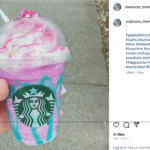Social media has become deeply embedded into society, transforming how we communicate, share information, express ourselves, and interact. Almost 4.8 billion people worldwide now use social media actively, spending an average of 151 minutes daily. This level of adoption underlines how social media has become an indispensable part of everyday life for people across the globe.
However, the social media landscape remains dynamic. It is constantly evolving with the emergence of new platforms, features, trends, and technologies. User needs and expectations are also changing as people seek more personalized, engaging, and intuitive experiences.
Social media has even affected brands indirectly in improving their SERP Rankings. Social media performance is not a Google ranking factor but some studies show that pages with more social shares tend to rank higher in Google results.
This article will explore some of the most important emerging trends and changes that will likely shape social media’s future in the coming years. Examining these key developments will provide insights into how social media users’ patterns, behaviors, and engagement preferences are shifting in the digital era.
Rise of Private Messaging Platforms
Private messaging apps like WhatsApp, Facebook Messenger, and WeChat are seeing massive growth in popularity and usage worldwide. WhatsApp alone has Over 2.7 billion monthly active users globally, underlining the vast scale these private platforms have achieved. People increasingly use such apps to have more personal, intimate conversations and privately share content in a small group or one-on-one setting. The evolving privacy controls and options these messaging apps provide also allow users to manage their communications and social interactions more customized and securely.
With their emphasis on privacy and small-scale sharing, experts predict private messaging apps will surpass public social networking platforms in users over the next few years. Their inherently more personal and self-controlled environment aligns well with rising user concerns over privacy, toxicity, and mental health impacts. Private messaging allows for socialization in a more protected space, away from the pitfalls of open networks.
Ephemeral Content
Ephemeral content that disappears or is available for only a short duration after being viewed is an increasingly popular format on social media. Snapchat pioneered this trend with Stories that vanish after 24 hours. Instagram and Facebook Stories also allow users to share temporary photos and videos that expire after a day. The transient nature of such content adds a sense of immediacy, urgency, and excitement since it is accessible only for a limited period.
People also enjoy the informal, casual vibe of ephemeral sharing that provides a change from permanent content preservation norms on social media. We will likely see more platforms embrace temporary stories and disappearing content as users seek to share moments more authentically, unfiltered, without worrying about permanence. The advent of ephemeral messaging apps like Telegram also points to the broader appeal of impermanent digital interactions.
Live Video Streaming
Live video streaming has become a hugely popular feature of social media apps like Instagram, TikTok, and YouTube. The real-time engagement and interactivity enabled by live streaming allow content creators to interact more organically with their audience. People enjoy streaming real-life happenings, from concerts and events to everyday moments. It provides an immersive first-hand experience to viewers. Social media platforms will likely continue enhancing their live video tools, integrating innovative features like augmented reality effects, interactive filters, and more to make streams more engaging.
The Rise of Influencer Marketing
Influencer marketing on social media has exploded in the past few years, with brands partnering with famous online personalities to promote products. The industry is estimated to grow to $21.2 billion worldwide in 2023. More brands leverage micro-influencers with highly engaged, specialized audiences in their niche domains. Dedicated analytics tools to identify relevant influencers for campaigns and manage partnerships will also continue evolving. At the same time, maintaining authenticity and transparency around sponsorships will be critical for influencers and brands to sustain credibility and build consumer trust.
Growth of Visual Sharing
From photos to animated GIFs, visual sharing dominates social media. Platforms like Instagram and Pinterest, built entirely around images, are hugely popular. TikTok took off with bite-sized video memes. Visual content tends to be more engaging as it’s faster to consume. Creative visual formats like Stories and Reels are also gaining traction. Visual communication will be central to social media in the future.
Enhanced Privacy Controls
With growing concerns around privacy, social networks are giving users more control. New features let you limit who sees posts, remove tags, and hide likes and follower counts. Apps like Threads from Instagram focus on close friends. Privacy-first platforms like MeWe are also emerging. Social media companies will continue improving privacy tools to ease security concerns. However, challenges around data transparency persist.
Rise of Interest-based Social Communities
Interest-based social communities organized around niche topics are seeing rapid growth. Platforms like Reddit, Discord, and Clubhouse have tapped into people’s desire to connect with others who share specific interests and passions. These forums bring together groups from investing enthusiasts to gaming fanatics, allowing users to geek out over specialized topics. A greater sense of belonging and meaningful interactions emerge in these niche communities.
Looking ahead, we could see more online communities coalescing around endless hobbies, health conditions, parenting groups, and more. Brands and businesses can leverage these targeted interest spaces to engage with and market to their ideal audiences authentically. In this dynamic landscape, the use of social media for small businesses becomes increasingly crucial. Establishing a presence in these niche communities provides a valuable opportunity for small businesses to connect with their target audiences and build authentic relationships, fostering brand loyalty and growth.
Decreasing Organic Reach
As social media platforms have implemented more advanced personalized algorithms, the unpaid organic reach for pages and profiles has dropped significantly. Now, most pages must spend promotional to reach wider audiences beyond just their existing followers. There is a growing trend of integrating native advertisements and sponsored content seamlessly. While paid advertising and boosting content will become the norm for brands, striking the optimal balance between paid reach and organic community-building remains crucial. Developing authentic engagement and conversations remains vital even as social platforms prioritize paid reach in their business models.
The Pros and Cons of Social Audio
Social audio apps like Clubhouse, Stereo, and Spotify Greenroom introduced a novel way for people to connect solely via voices. They gained significant buzz initially for their unique interfaces. However, the hype has settled somewhat recently, prompting questions about the mainstream longevity of social audio. Proponents argue that audio-only social media enables deeper connections without visual distractions.
However, the lack of visual cues can also limit communication bandwidth. Social audio features may evolve most successfully to supplement established visual social networks. Retaining users and keeping them engaged over the long term remains an uphill climb for stand-alone audio apps.
The Rise of Mental Health Features
Social media’s impact on mental health, especially for younger users, is increasingly scrutinized. In response, some apps are rolling out well-being features. Instagram highlights take-a-break reminders, while TikTok lets users opt out of night mode. Critics argue the core algorithms and incentives remain unchanged. Social networks are under pressure to balance business goals with user well-being. More mental health-focused innovation is needed.
The Future of News and Journalism
Social media has become a dominant news source for millions, raising concerns about misinformation. However, optimized news content also performs well on social channels. Platforms like Facebook, Snapchat, and Twitter are investing in new products. Meanwhile, alternative models like nonprofit journalism and reader-funded platforms are emerging. Social platforms will have a more significant impact on news discovery, consumption, and monetization.
The Shift to Mobile
Mobile usage now accounts for over half of social media time spent. The main focus of platforms is to simplify mobile experiences by incorporating features like Stories and vertical video. More apps are going mobile-only, like Snapchat. Desktop usage will decline as social networks optimize for smartphones. Seamless mobile experiences will be pivotal, especially with 5G connectivity coming.
The Growing Influence of Generation Z
Generation Z refers to the generational cohort born between 1997 and early 2012; these digital natives have grown up entirely in an online, social media-dominated world. As a result, their habits and preferences on platforms like TikTok, Instagram, and Twitch heavily influence emerging trends. Gen Z values authenticity, creativity, diversity, and engagement on social media. They also lead the rapid adoption of new niche platforms, giving them an outsized influence on shaping future platform development and features; for brands hoping to connect with youth audiences, understanding these Gen Z cultural codes on social media will be critical.
The Evolution of Digital Identities
Historically, social media profiles were relatively static representations of one’s identity. However, profiles have evolved into dynamic canvases for identity expression and creation. Features like Instagram bios and adding personal pronouns allow much greater self-expression. Live streams, Stories, and Reels enable users to interact and share moments directly. As social media expands into the virtual and augmented reality space, the scope of online identity creation will grow exponentially more multifaceted. Users may be able to cultivate entire portfolios of virtual identities. Personal branding and self-presentation online are poised to become more nuanced and creative.
Conclusion
Social media will continue rapidly evolving in the coming years with fresh opportunities for connection and discovery. While public platforms still dominate, private messaging and interest-based communities are becoming popular. Visually engaging and ephemeral content formats also connect with users. At the same time, social networks need to enhance transparency, privacy, and well-being features to earn user trust.
With more innovative recommendation algorithms and new technologies like VR on the horizon, our social media experiences will only get more intuitive and immersive. But human connection will remain at the heart of social platforms as people seek out meaningful digital relationships.






